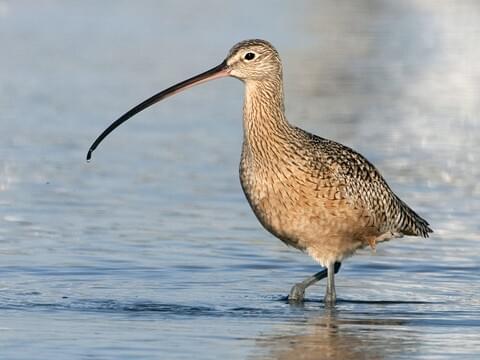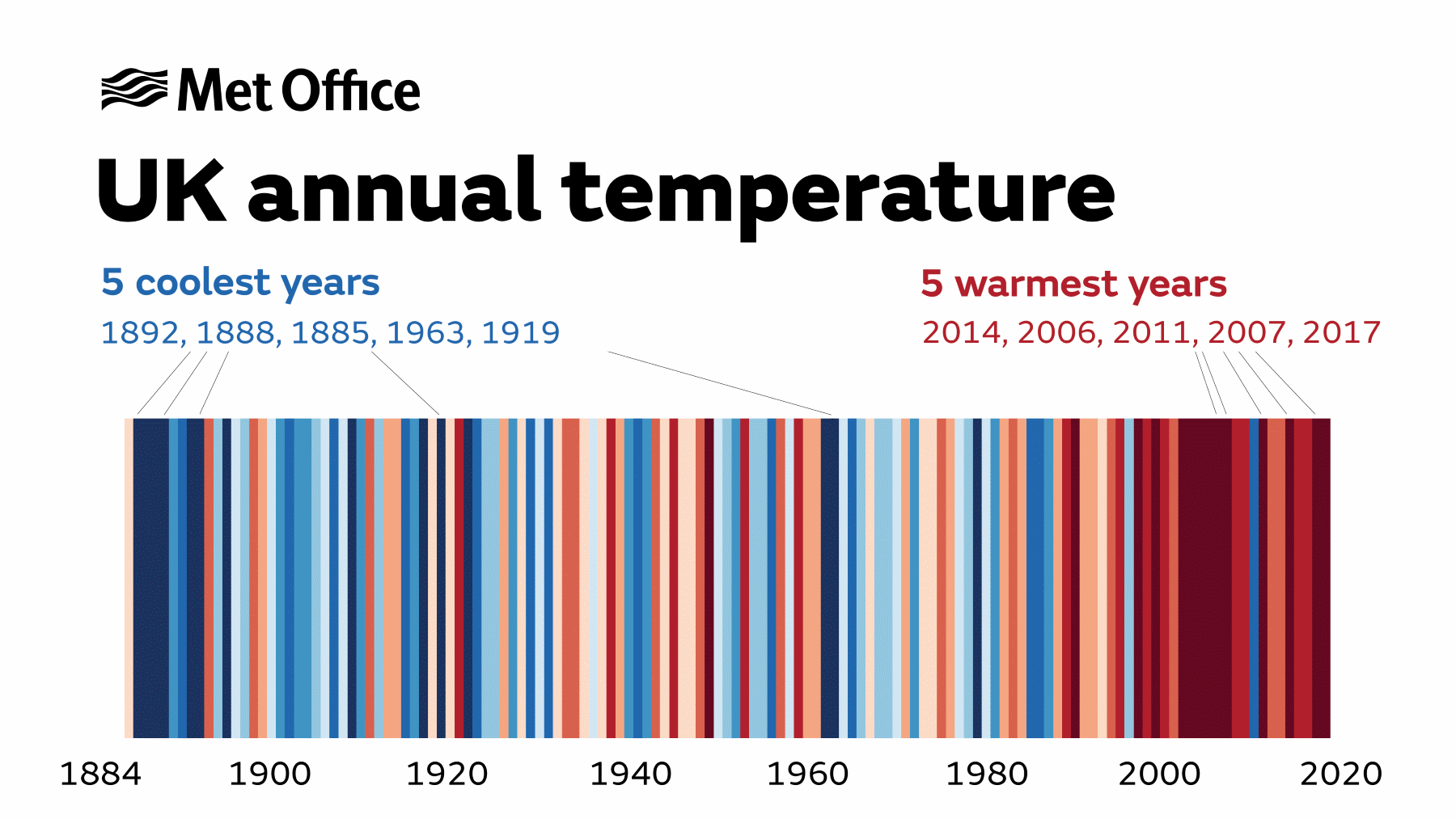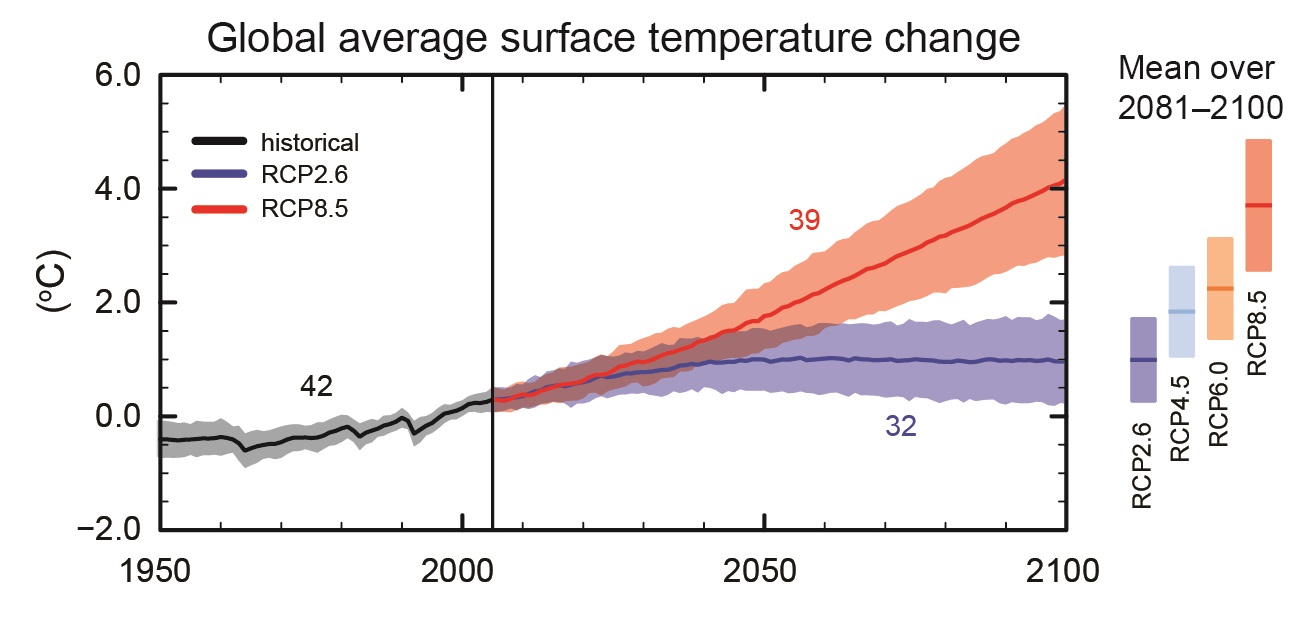BIRD'S BIODIVERSITY AND CLIMATE CHANGE
 |
| (Source- Kennedy Wild Bird Food) |
Introduction
Birds are known for their beauty, songs, and amazing capability to fly, but apart from that birds also play an important role in the ecosystem. Birds shows many activities in the environment like seed dispersal, plant pollinators and pest control and it also act as a good indicator for the environmental health. Birds are highly sensitive to climate and weather and a good indicator for the climate change. Nowadays, bird’s biodiversity faces many threats due to many reasons like habitat clearance, disturbance in breeding, fire and burning of habitats, coastal development and increase in the number of invasive species. Apart from all, the main serious cause for the bird’s biodiversity loss is the change in the climate conditions of UK.
Changes in the UK Climate
Observed Changes
As you can see in the above graph, the global temperature in the UK is increasing continously. The updated met office result shows that UK has top ten warmest years have occurred since 2002, whereas none of the ten coldest years have occurred since 1963.
2. In
the mid of 19th and 20th century, global sea-level has
increased and now, it is about 3mm per year.
3. Around the UK coast, sea surface temperature has become raised over the
last three decades by about 0.7℃.
Projected Change
1. According to central estimate, UK temperature will be rise to 3-4℃ in
the 2080 year.
UK average temperatures expected increases
up to 3-4℃ in 2100 year. (Source:
Lowe, JA. et al. (2018) UKCP18 Science Overview Report)
2. The sea level in London will be rise to 18cm in 2040 and 36cm in 2080.
3. The sea temperature across the UK will be rise to 4℃ in the end of 21st
century.
"This chart from the IPCC shows two possible futures for our climate. The blue line represents what could happen if we commit to cutting emissions, and the red line represents what could happen if we don't make any changes". (source- Met Office)
Impacts of Climate Change on the Bird's Biodiversity
The population of birds are the most severely affected by the climate
change in the UK. Due to climate change not the rate of metabolism, but the
behaviour of bird’s species is also affected directly or indirectly. Some of
the effects are earlier breeding, shifts in timing, loss of space, and changes
in population distribution, etc,
1. Changes in Distribution and Geographical Range
- Due to the change in the climate, mostly bird’s species in the UK move towards the northwards. For example – Blackcaps and chiffchaffs (short distance migrants) both are the species of the UK increased their population or breeding towards the northwards by 289% and 104% respectively since 1970, because climate conditions become more favourable for this species.
| Chiffchaffs (Souce- RSPB) |
- Some common and widespread species in the UK also change their distribution such as Cetti's warbler and Dartford warbler species which intially breed in the south-east of the UK in 1970s but now this bird's species are almost distributed in the south-west.
 |
2. Shifts in timing
| Swallow (Source- Happy Beaks) |
- This shift in the timings cause threat to the birds when birds depend or interact with all important life cycle steps like plants and insects. When the structure and functioning of this important steps are disrupted, it causes threat to the bird’s species. For example- Swallows common migratory arrived 15 days earlier in the UK and breeding 11 days before than they have done in the 1960s. Due to this reason, this migratory bird’s species staying more time in the UK.
- Sand martin and white throats two migratory birds, staying two weeks more in the UK than they did in the 1960s.Because of this, the richness of this bird’s species increases in the UK over the period (1960-2010).
| Sand martin (By Sandra Palme) |
| White throats (Source- Garden Bird) |
3. Communiity Change
Nowadays, with the change in the climate conditions, birds also change
their behaviour and due to this many southerly-distributed species, resident
species change their behaviour and become more familiar with the northern bird species.
It means warm temperature bird’s species are become more closely related to the
cold-temperature bird species. the cold adapted northern bird’s species decline
which is the main change in the community composition across the England.
Case Study
| Kittiwake (CREDIT- KELVIN ELSBY) |
1. Kittiwake birds in UK
- The population of kittiwake bird’s species in UK has declined by 60% later 19th century because of decline in the breeding rate and adult survival due to the change in the climate conditions.
- There are two reasons by which the Kittiwake populations affect most in the UK. First, due to the less availablity of food and second the most important one is changes in the ocean conditions due to climate change which cause decline in the survival rate of Kittiwake bird’s species in the UK.
Number of kittiwake bird’s species in UK
data from 1998 to 2019. (source: NBN atlas).
- As you can see in the above the chart, due to the continuous decline of this Kittiwake species after 2015, now it is considered on the red list of UK birds which faces high risk of extinction.
 |
| Curlew (Credit- Brian Sullivan) |
2. Curlew Birds in UK
- Around one quarter of the world's curlews breed in the UK.
- Curlews is an upland bird's species in the UK which shows sudden decrease in their numbers later 2015 (see in the below chart) and now, it is considered as a vulnerable species and faces high risk of extinction.
Number of curlew bird’s species in UK data
from 1998 to 2019. (Source: NBN atlas)
- It is clear from many evidences that more southern species are expand towards the northwards and uphill range in the UK and on the other side northern species are predicted to be declined like curlews species which is expected to decrease by 50% in 2080.
As you can see in the above maps- (a) Current and (b) 2080 suitability shows richness of curlew bird’s species is
projected to fall by 50% (1997-2080) under a medium climate change scenario.
Conservation Actions
The continuous change in
the climate shows many impacts on the bird’s biodiversity, to control this
impacts conservation action is required which can prevent the loss of bird’s
biodiversity in the UK. Some important applications which helps in the conservation
actions are-
1. Maintain and increase ecological
resilience
- To resilience the impacts of climate change, build strong populations of vulnerable species which can disperse to new colonise areas.
- New and revised conservation actions is required for the climate change to get the current conservation targets.
- Initiate habitat management and conserve all ecological habitats to decrease the impacts of climate change.
- By reversing habitat fragmentation, we can create a new area of habitat for the bird’s biodiversity.
2. Prepare
for accommodating change
- To reduce the impacts of climate change, conservation actions or targets should be realistic, flexible and strong to get the best results.
- By extending ecological networks and consider translocation of species where natural dispersal is not possible.
- By allowing natural development of coast and rivers.
3. Take
practical action now
- Protect endangered areas and all other high-quality habitats.
- Raise awareness of benefits of natural environment to the society.
- Reduction in the greenhouse gas emissions.
- Introduce upland catchment management for wildlife and water.
- Growing more trees in urban areas.
- Control harmful invasive species which affects the bird’s biodiversity.
4. Improving the evidence base
- Many impacts of climate change for the bird’s biodiversity are remain unknown.
- We need to improve our implementing process and try to make simplifying guidance.
- We need more further research to monitor the influences of climate change on bird’s biodiversity throughout the UK.
- We need more co-operation of scientists, government, agencies, and NGOs to reduce the influence of climate change on bird’s biodiversity.
- We need to improve the quantity and quality of data on bird’s species to reduce the delay in decision making.






Comments
Post a Comment